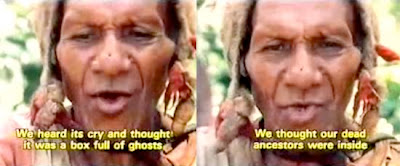(Paysages métaphysique)

Apparatus Thomas Struth is arranged from the perspective of someone who could be in the urban landscape at that time. The image is focused on small details of architecture and the weight distribution by means chiaroscuro while the total absence of clouds and other weather allows Struth to focus on every detail present, in a pitiless clarity. Probably photographed at dawn, these images exclude people and other living creatures, becoming metaphysical landscapes - such as still lifes - a representation of the world without rights. In reality, it is this meticulous in the rendering of every detail, the potential extension of contemplation and the absence of life that our attention to the specific context that can otherwise seem trite and familiar. Struth gives us the ability to recognize and examine not only the historical and temporal stratification of the various elements that make up the entire urban and architectural, but their ideological consistency, the incongruity of the various interests that determined the state of inevitable contingency pending. Plastically rendered clear of buildings, the potential extension of contemplation seems to contradict the two-dimensionality of the photographic medium, inviting the visitor's eyes to take a trip "ad-infinitum, virtual spaces and among the volumes that are represented, to enter in a relationship, different and more thoughtful with the urban environment.





From Struth's early work, seen in black & white traversing his native Rhine to Italy, then flying to New York to Tokyo already reflect this process of "new objectivity." The repetitiveness of anonymous German buildings of the 1950s, the urban plan and rebuilding after the tragedy of war, the rapid economic miracle and its vicissitudes which continues until today, are dense and filled with history. The gesture photo renews and restructures the newspaper, through which emerges a new light, conditioner conceptually, crossing the aesthetic of the ordinary. Urban views of Italy, as Rome or Naples avoids any aspect heliographic picturesque views of postcards through which they are usually portrayed, and focus on the working class architecture of the 1950s, and claustrophobic spaces, densely layered over the centenarians in the center of Naples. This city is represented vertically, as another element of stratification with the prospect directed towards the hills, excluding the traditional perspective that includes a view of the bay and Vesuvius. The absence of people living in these images, a visual oxymoron as cities built for and by man, paradoxically invites us to reflect and think about their lives, their activities, their relations with this environment. Architecture and urban plan are the mirror of humanity, they order and distribute the line functions and productive activities of the community, channeling and influencing our way of living, thinking and connecting us with ourselves and others. Struth's photographs represent humans, even in his absence, through architecture, constructing a form of cultural anthropology of space occupied and traversed by him. More recently, these photographs in architectural contexts are loaded with symbolic and semantic resonances, where each element, coupled with the mythology of the subject, describe and demonstrate the contemporary condition. Among other things, they focus on building a gigantic Manzhouli in Mongolia, a region inhabited desert just by nomadic tribes and now one of the great trade routes of the east, a mock village pirate in a hotel in Las Vegas, Times Square New York, with a huge electronic whiteboard, the most prominent of Nasdaq, figurative example of the electronic market in the world, symbol of the digital economy, an anonymous street in Sao Paulo, one of the largest and most polluted megacities worldwide, characterized by strong social contrasts Struth explores ... sides of the globe variety and complexity of effects on photography. Itself as one of the fundamental instruments of information exchange at all levels, reminding us that contemporary life is characterized not only by the spectacular progress of the means of transport - which allow us to travel almost everywhere more easily compared to the previous generation, giving us a new awareness of space in the world - but also by the virtual space by constantly creating images of places where we never went and where we will go perhaps never. Struth representation of the urban context with which we are familiar we can analyze the nature in the absence of Man, extending the edge of our consciousness of the world, and at the same time understanding how humans have occupied and modified all the available space around him.




Illustrations come in part from Thomas Struth catalog published for the exhibition of the photographer at MADRE in Naples in 2008, available here.











